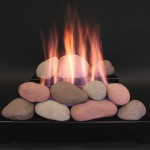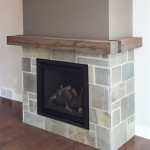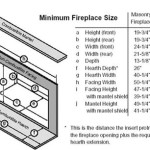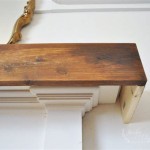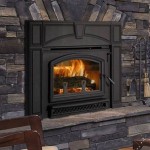Mantle On Stone Fireplace: Design, Installation, and Considerations
A mantel on a stone fireplace serves as both a functional and aesthetic element, enhancing the visual appeal of the hearth while providing a surface for ornamentation and practical use. The integration of a mantel with a stone fireplace requires careful consideration of design principles, installation techniques, and material compatibility to ensure both safety and enduring beauty.
Stone fireplaces, renowned for their rustic charm and durability, present unique challenges for mantel installation compared to brick or wood-framed fireplaces. The irregular surfaces of natural stone and the inherent mass of the material demand specialized methods for securing the mantel and ensuring its stability. Furthermore, the visual impact of the mantel must complement the existing stonework, creating a cohesive and balanced design.
Choosing the Right Mantel Material
Selecting the appropriate material for the mantel is crucial for both aesthetic integration and functional performance. Common mantel materials include wood, stone, and various manufactured options. Each offers distinct advantages and disadvantages that must be weighed against the specific characteristics of the stone fireplace.
Wood mantels offer a classic and versatile option, lending warmth and character to the fireplace. Hardwoods such as oak, maple, and walnut are popular choices due to their durability and attractive grain patterns. The selection of wood species and finishes should complement the color and texture of the stone. It is imperative to treat the wood with a fire-retardant coating to minimize the risk of combustion from the fireplace's heat. Consider the style of the home when selecting a wood mantle. A rustic stone fireplace might be complemented by reclaimed wood, while a more modern stone design may benefit from a sleek, stained wood mantle.
Stone mantels, often crafted from materials similar to or contrasting with the fireplace stone, provide a seamless and integrated aesthetic. Limestone, granite, and slate are commonly used for stone mantels, offering a range of colors and textures to complement the existing stonework. Stone mantels are exceptionally durable and fire-resistant, but their weight and complexity of installation require professional expertise. When selecting a stone mantle, consider the overall weight of the stone in relation to the supporting structure of the fireplace. Overly heavy mantles may require additional support or reinforcement of the fireplace itself.
Manufactured materials, such as concrete or composite materials, offer alternatives that can mimic the appearance of wood or stone while providing enhanced durability and reduced maintenance. These options can be particularly appealing for homeowners seeking a specific aesthetic with greater affordability or ease of installation. These options can also be molded into more ornate designs than can be easily achieved with natural stone or wood.
Installation Techniques for Stone Fireplaces
Installing a mantel on a stone fireplace requires careful planning and execution to ensure structural integrity and a visually appealing result. The method of installation will depend on the weight of the mantel, the type of stone used in the fireplace, and the desired aesthetic.
One common method involves using hidden brackets or corbels to support the mantel. These brackets are anchored into the stone using epoxy and mechanical fasteners, providing a robust and concealed support system. The size and number of brackets must be sufficient to support the weight of the mantel and any items placed upon it. Precisely drilling into the stone to accommodate the brackets requires specialized tools and expertise to avoid cracking or damaging the stone.
Another approach involves creating a ledge or recess in the stone fireplace to accommodate the mantel. This method provides a more integrated appearance, but it requires significant modification of the existing stonework. The ledge must be carefully leveled and reinforced to ensure a stable and even surface for the mantel. This method may be preferred when the desired aesthetic is to have the mantle appear to be a natural extension of the stone fireplace.
For heavier mantels, a combination of brackets and a supportive base may be necessary. The base can be constructed from stone or other durable materials and should be securely anchored to the fireplace. The brackets then provide additional support and prevent the mantel from shifting or sagging. A licensed contractor should be consulted when considering alternative installation methods that require significant structural modification, which is especially true in the case of older stone fireplaces.
Addressing Safety Considerations
Safety is paramount when installing a mantel on a stone fireplace. The proximity of the mantel to the firebox requires careful attention to building codes and fire safety regulations. The mantel's height above the firebox should adhere to minimum clearance requirements specified by local codes to prevent overheating and potential fire hazards.
The depth of the mantel also influences its susceptibility to heat exposure. Deeper mantels, while providing more surface area for display, are more prone to trapping heat and potentially igniting combustible materials. Consider the use of a heat shield or non-combustible material beneath the mantel to deflect heat and reduce the risk of fire. Heat shields are particularly important when installing wood mantels, even with fire-retardant coatings.
Regular inspection of the mantel and surrounding stonework is essential to identify any signs of damage or deterioration. Cracks, loose stones, or signs of excessive heat exposure should be addressed promptly to prevent further damage and ensure the continued safety of the fireplace. The space between the stone and the mantle should also be routinely inspected for any combustible debris such as leaves or twigs that could pose a fire hazard.
The weight of items placed on the mantel should also be considered. Overloading the mantel can compromise its structural integrity and potentially lead to collapse. Distributing the weight evenly and avoiding excessively heavy objects can help to maintain the mantel's stability and prevent accidents. Regular dusting and cleaning of the mantel will also help to prevent the buildup of flammable materials such as dust and soot.

How To Build And Hang A Mantel On Stone Fireplace Shanty 2 Chic

Magrahearth Natural Wood Concrete Mantel Fireplace Stone Patio

Stone Fireplace Makeover Taryn Whiteaker Designs

Fireplace Mantels Three Questions To Consider The Cultured Stoners

How To Build And Hang A Mantel On Stone Fireplace Shanty 2 Chic

Barnwood Fireplace Mantel The Collection

Stone Fireplace With Wrap Around Barn Beam Mantel House Stacked Fireplaces Remodel

Installing And Making A Floating Mantle For Our Stone Fireplace

Country Style Mantels And Fireplaces Town Living

Cast Stone Fireplaces So Much Better With Age
Related Posts


